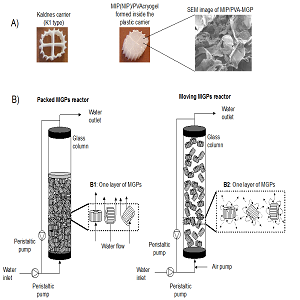
Bo Mattiasson
Lund University, Sweden
Title: Robust, high resolution affinity capture of environmental pollutants
Biography
Biography: Bo Mattiasson
Abstract
Emerging pollutants are causing severe environmental problems. Many new pollutants appear at low concentrations, but because of their physiological effects major effects on ecosystems can be seen, in spite of the trace amounts present. Endocrine disruptors constitute one group of chemicals that have hormonal effects on many animals, and even human beings. Much effort has been spent on monitoring the level of pollution, but less on strategies to combat the threat. Because of the very low concentrations, many of the emerging pollutants, hormone active substances, pesticides, pharmaceuticals, flame retardants etc. pass untreated through the wastewater treatment plant (WWTP) and get released to the recipient. Pharmaceutical biotechnology operates with high resolving separation technology. In an effort to transfer this to environmental technology, one needs to identify the hurdles to overcome: selectivity; robustness of the affinity receptor and; improved compatibility of the adsorbents with the harsh conditions in wastewater. For this matter we used molecularly imprinted polymers (MIPs) as affinity receptors. These are made of robust polymer material, but have still excellent selectivity and very good affinity for the targets. The MIPs were introduced into a composite cryogel with large pores. This makes it possible to handling crude feed stocks, even with microbial cells present. In order to stabilize the composite gels, they were placed in plastic housings, similar to what is used for cultivation of microbes in WWTP. Plastic housings of different sizes or shapes make it possible to separate composites that have captured different types of pollutants. After regeneration, the adsorbent is ready for a new cycle. When treating effluent from the WWTP in Lund municipality, one could enrich endocrine disruptors and release water where no traces of the pollutants could be detected. MIPs have also been used as recognition elements when designing biosensors for environmental monitoring.

Schematic presentation of plastic housings filled with MIP-containing cryogels used in a fluidized bed.

